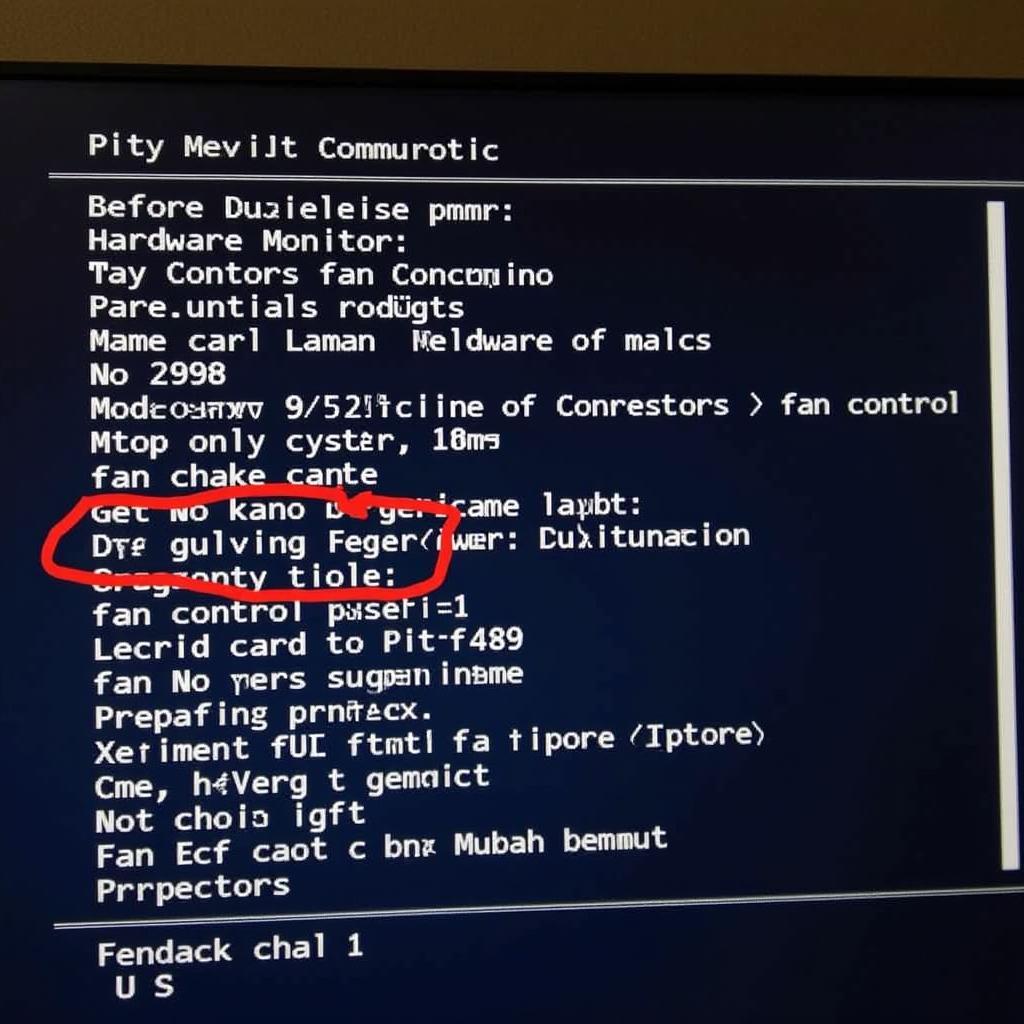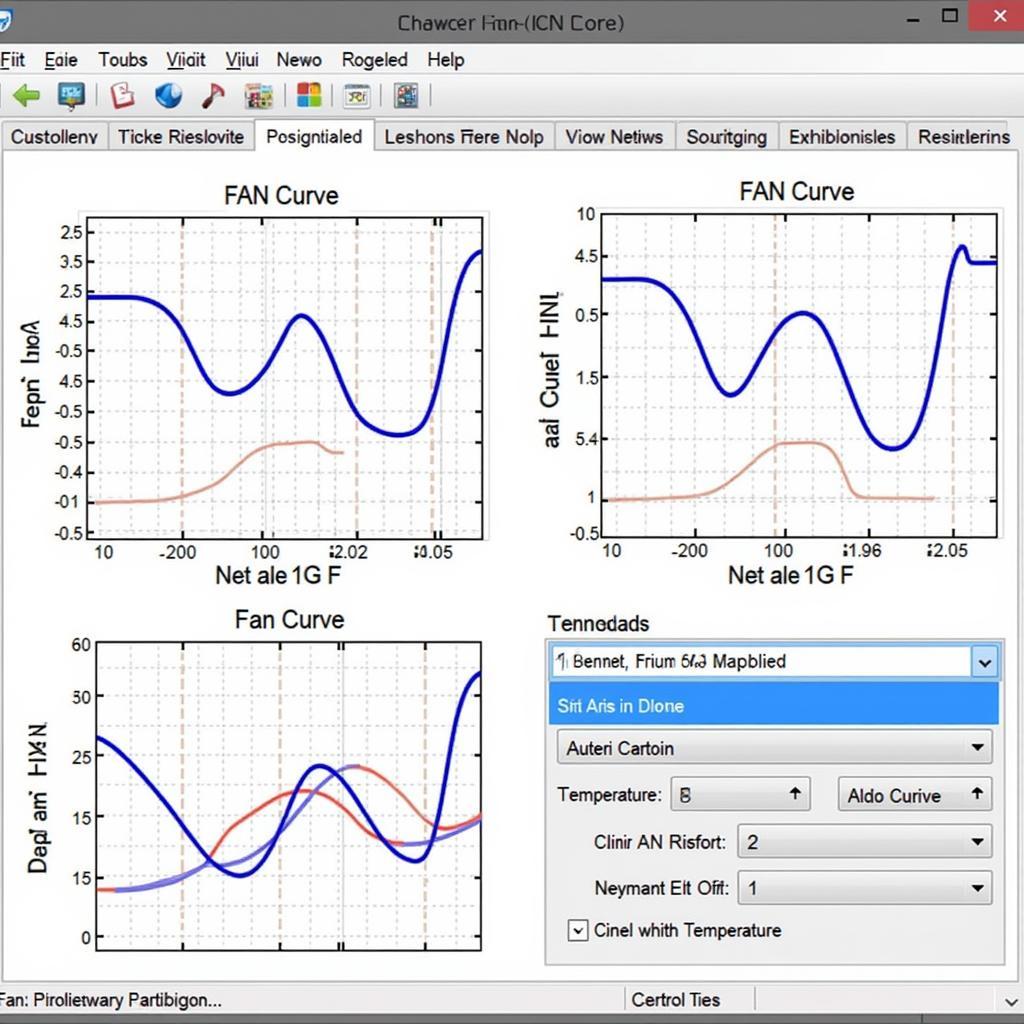Having trouble with your CPU fan constantly running loud or overheating? You’re not alone. CPU fan control in Windows 10 is a common issue, but thankfully there are ways to manage and optimize your fan speed for optimal performance and noise reduction. This guide will walk you through the ins and outs of CPU fan control, from understanding why it’s important to exploring various methods for customization.
 CPU Fan Noise on Windows 10
CPU Fan Noise on Windows 10
Why is CPU Fan Control Important?
Your CPU, or Central Processing Unit, is the brain of your computer, and like any brain, it needs to stay cool to function properly. That’s where your CPU fan comes in. It helps regulate the temperature of your CPU, preventing overheating and potential damage.
Effective CPU fan control ensures:
- Optimal CPU Temperature: Prevents overheating, crashes, and potential hardware damage.
- Extended Lifespan: Reduces wear and tear on your CPU and fan, prolonging their lifespan.
- Reduced Noise: Minimizes distracting fan noise, especially during light workloads.
- Energy Efficiency: Optimized fan speeds can contribute to lower energy consumption.
Methods for CPU Fan Control in Windows 10
There are several ways to adjust your CPU fan speed in Windows 10. The best method for you depends on your comfort level and how much control you desire.
1. BIOS Settings
Your computer’s BIOS (Basic Input/Output System) often provides basic fan control options.
- Accessing BIOS: The method varies depending on your motherboard manufacturer, but it typically involves pressing a key (e.g., F2, Del, F10) during startup.
- Fan Control Options: Look for sections like “Hardware Monitor,” “PC Health Status,” or similar. You might find options to enable automatic fan control or set custom fan curves.
 Accessing BIOS Settings for Fan Control
Accessing BIOS Settings for Fan Control
Note: BIOS settings can vary greatly, and not all motherboards offer extensive fan control.
2. Windows Power Options
Windows 10 allows for some basic fan management through its power plans.
- Navigate to Power Options: Right-click the battery icon in your system tray and select “Power Options.”
- Edit Plan Settings: Click “Change plan settings” next to your current power plan.
- Advanced Power Settings: Click “Change advanced power settings.”
- Processor Power Management: Expand this section and look for options related to “System cooling policy” or “Processor performance boost mode.” These settings can influence fan behavior.
3. Third-Party Software
For the most comprehensive CPU fan control, third-party software is often the best solution. These programs offer advanced customization options and monitoring capabilities.
Here are a few popular options:
- CPU fan speed control software windows 10: Offers a user-friendly interface for setting custom fan curves, monitoring temperatures, and even controlling other system fans.
- SpeedFan: A long-standing fan control utility known for its extensive features and customization options.
- Argus Monitor: Provides detailed system monitoring and fan control with a focus on hard drive health.
 CPU Fan Control Software Interface
CPU Fan Control Software Interface
Choosing the Right Software: Research and compare different software options to find the one that best suits your needs and technical comfort level.
Troubleshooting Common Fan Issues
- Fan Always Running at High Speed: This could indicate overheating, a faulty fan, or incorrect fan curve settings. Check your CPU temperatures, clean your computer from dust buildup, and ensure your fan control settings are appropriate.
- Fan Not Spinning at All: This is a serious issue that requires immediate attention. It could be a dead fan, a connection problem, or a motherboard failure. Contact a professional for diagnosis and repair.
- Fan speed high when log in windows 10: This can sometimes be related to startup processes putting a heavy load on the CPU. Consider disabling unnecessary startup programs.
- GPU fan always at 100: While not directly related to CPU fan control, similar troubleshooting steps can apply. Ensure your graphics card drivers are up-to-date and that your GPU isn’t overheating.
- Laptop fan driver: If you’re experiencing fan issues on a laptop, ensure you have the latest drivers for your laptop model from the manufacturer’s website.
Conclusion
Effective CPU fan control is vital for maintaining your computer’s performance, stability, and longevity. By understanding the importance of fan management and utilizing the various methods available in Windows 10, you can optimize your system for ideal temperatures, reduced noise, and extended hardware lifespan.
Remember to choose the method that aligns best with your comfort level and desired level of control. Whether you opt for BIOS tweaks, Windows settings, or third-party software, you can take control of your CPU fan and keep your system running smoothly for years to come.
Need help with your CPU fan control? Contact us at Phone Number: 0903426737, Email: fansbongda@gmail.com Or visit us at: Group 9, Area 6, Gieng Day Ward, Ha Long City, Gieng Day, Ha Long, Quang Ninh, Vietnam. We have a 24/7 customer support team.


